SUMMARY
This is AI generated summarization, which may have errors. For context, always refer to the full article.
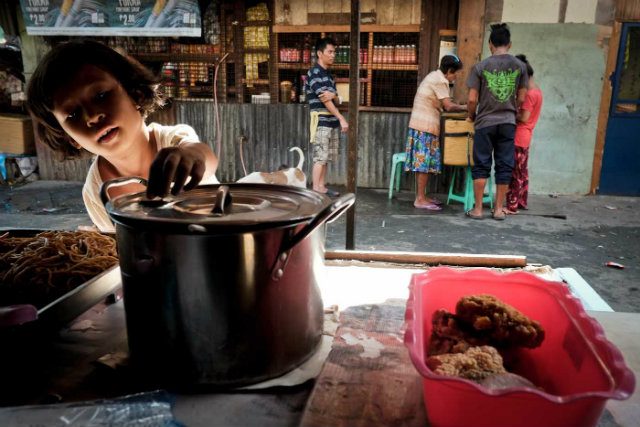
MANILA, Philippines – Smoke fills the kitchen of Norberto Lucion’s eatery. He’s still busy preparing the house specialty, but a few people have asked for his kaldereta.
The 60-year-old former assistant cook in a restaurant in Bulacan has been stewing his own kaldereta recipe for about 8 years now. And it seems it remains popular among patrons.
Kaldereta is a Spanish-influenced dish that used to be served only during special occasions. Originally, it was a goat stew with tomato sauce, liver paste, bell pepper, and carrots. But with Norbert’s recipe, it’s kaldereta on the cheap.
Ingredients
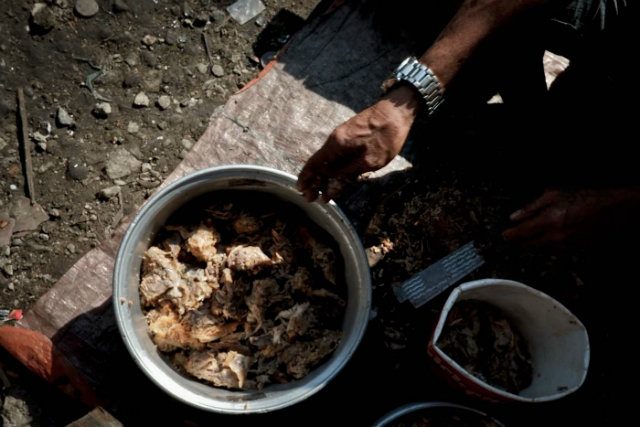
Chicken
Garlic
Onions
Onion leaves
Lemongrass stalk
Banana ketchup
Achuete
Water
Cooking oil
Preparation
Norberto is peeling the meat off about a dozen buckets of chicken. They’re part Jollibee chicken joy and part KFC. He says he gets them from a regular supplier.
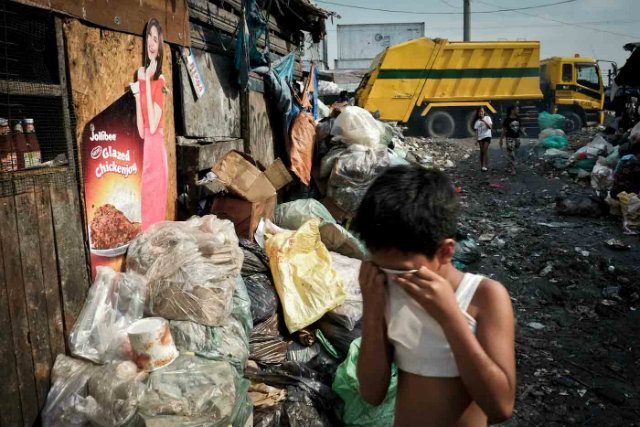
The buckets of chicken come from a “pagpagan,” a place in the dumpsite of Happyland, where recyclable materials are separated from biodegradables. Plastic spoons and forks, drinking cups, and food cartons, end up being sold at a junk shop. Some of the food in the trash may also end up being “recycled.”
Leftovers from fast food chains are called pagpag, from the Filipino word that means, “to shake off.” Dirt is literally shaken off from food found in dumpsters. They are eaten again. They are also sold. Norberto buys them for P20 (US$0.45) per bucket.
He says chicken flakes are best for kaldereta; chunks are cooked as adobo; bigger (or sometimes whole) pieces are simply refried.
One may wonder how much food goes to waste in a country where millions have nothing to eat? Or how come some of the top corporations in the Philippines are fast food businesses, but many poor Filipinos go hungry?
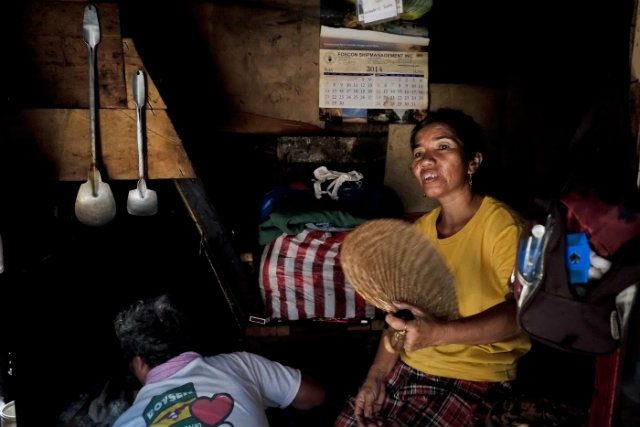
When Norberto is finished sorting out his buckets, he washes the chicken twice, using about two gallons of water, which cost P1 (US$0.02) when fetched from their neighborhood’s water faucet.
After a batch is washed, he uses the same water on the same two pots to wash the remaining chicken flakes.
Meanwhile, their cats feast on the leftovers of the recycled leftovers, right on the chopping board where Norberto prepared his chicken pagpag.
It seems everything is recycled and nothing is left to waste in the dumpsites of Happy Land.
Cooking instructions
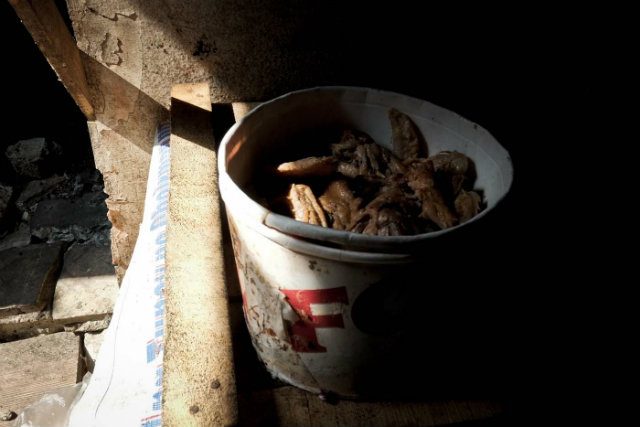
Crush a handful of garlic. Then slice about two handfuls of small red onions.
He slices onion after onion with the flair of a master chef, but no tears fall from Norberto’s eyes.
Like most of the residents of Happyland, he is a city migrant who has faced the challenges of poverty and hunger all his life. He has worked as a stevedore at the pier, a hired help, and an assistant cook. When he was too old to get any menial job that involved manual labor, he resorted to cooking pagpag.
He sautés the garlic and onion, and burns them to a brown crisp. He adds about two cups of water with 4 small packs of achuete, a natural food coloring to give his kaldereta that delicious reddish tinge.
To take away the gamey taste of the chicken leftovers, he adds lemongrass stalks and onion leaves.
And instead of using the more expensive tomato paste, Norberto adds about half a liter of banana ketchup from an unknown brand. He then adds the chicken. It takes about 30 minutes to cook his kaldereta.
When making the perfect budget meal, Norberto has to be budget-conscious as well. He sells his kaldereta at P20 (US$0.45) per serving.
At the end of the day, he earns between P140-P200 (US$3.15-US$4.50) only from his pagpag meals.
Mouths to feed

Norberto, along with wife Rosamarie, and youngest daughter Rosalyn, have been long time residents of Happy Land. They are actually on the “Helping” area. And they have stayed here since 1989.
They came from another infamous Tondo dumpsite, Smokey Mountain. Norberto actually gave the government housing in Smokey Mountain to his eldest daughter who has given birth to two teen-aged kids.
The Lucions in Happy Land all depend on Norberto, including his son-in-law, who remains jobless. The 21-year-old Rosalyn already has a 7-month-old baby and a 3-year-old daughter, who occasionally eats pagpag.
Norberto claims they don’t get sick from eating pagpag. Nor do his patrons. What’s important, he says, is that he has food to put on the table. – Rappler.com
Add a comment
How does this make you feel?
There are no comments yet. Add your comment to start the conversation.